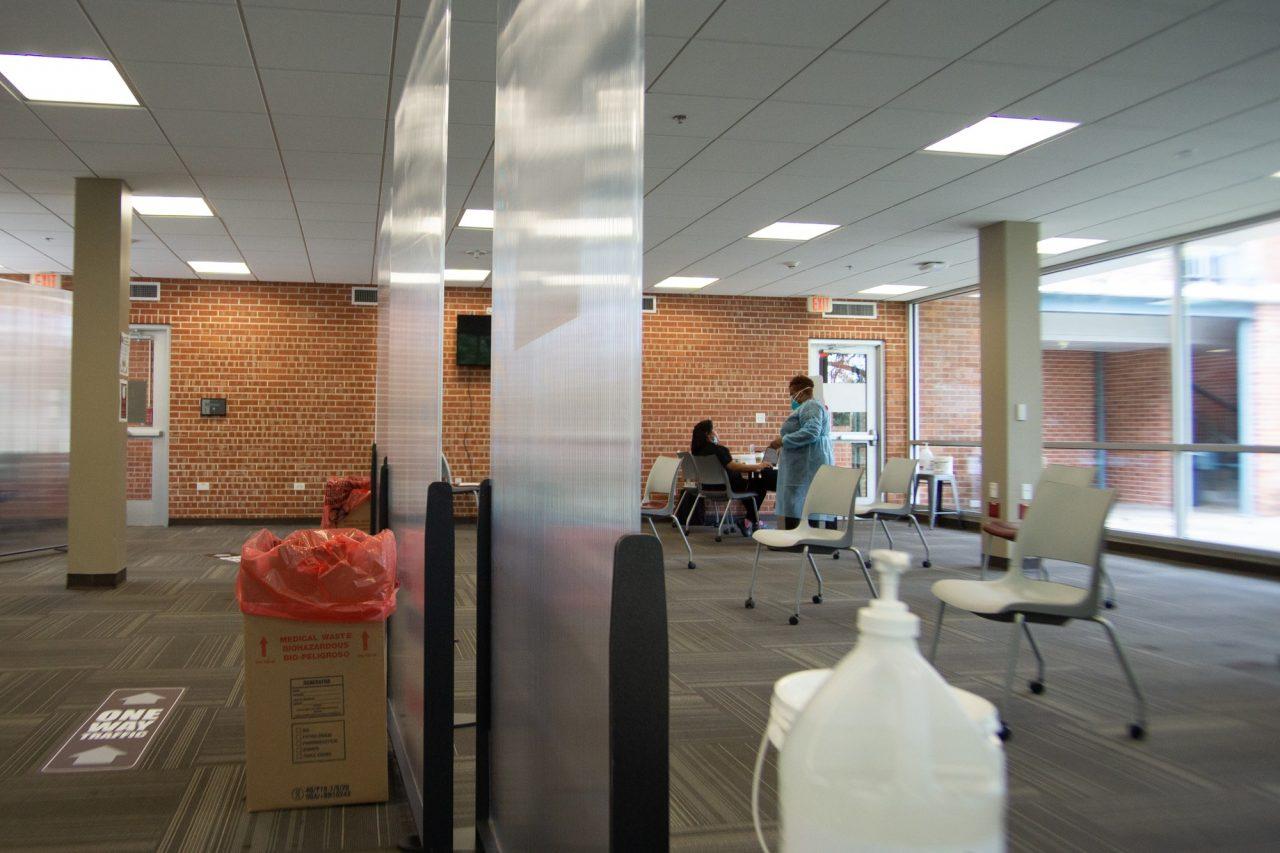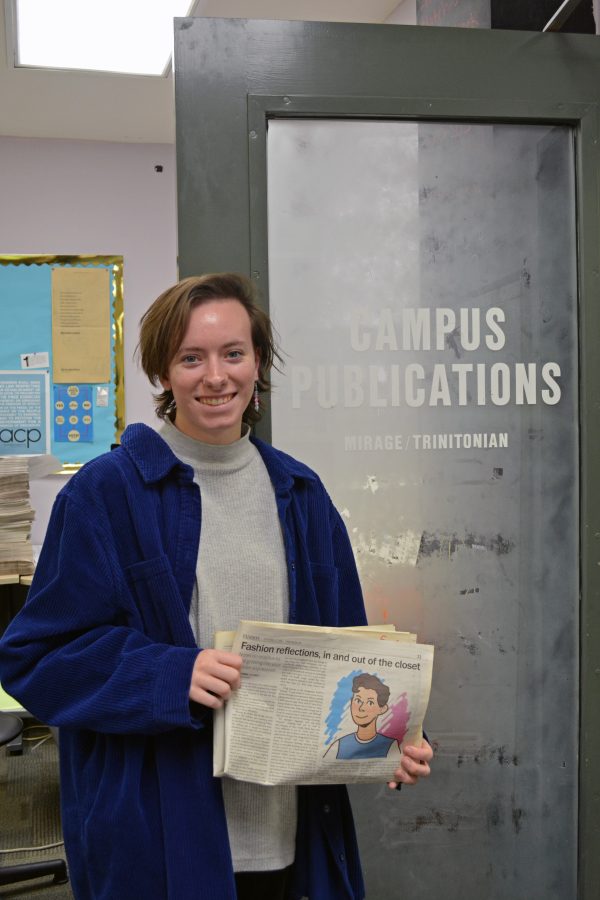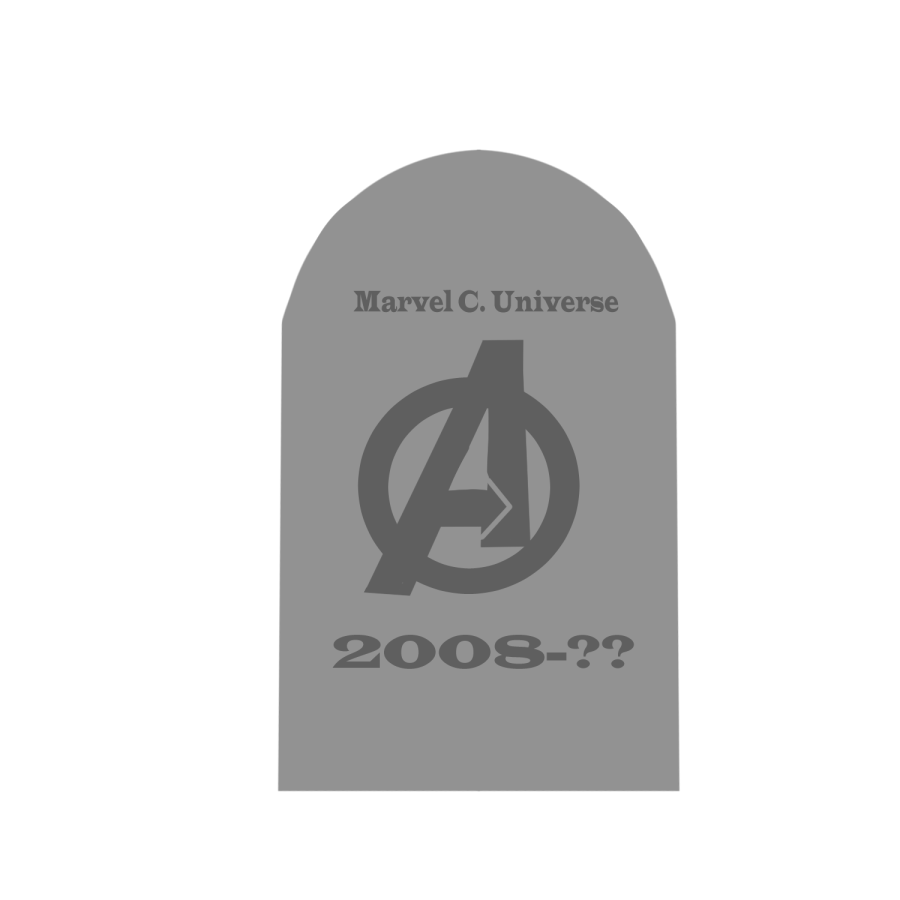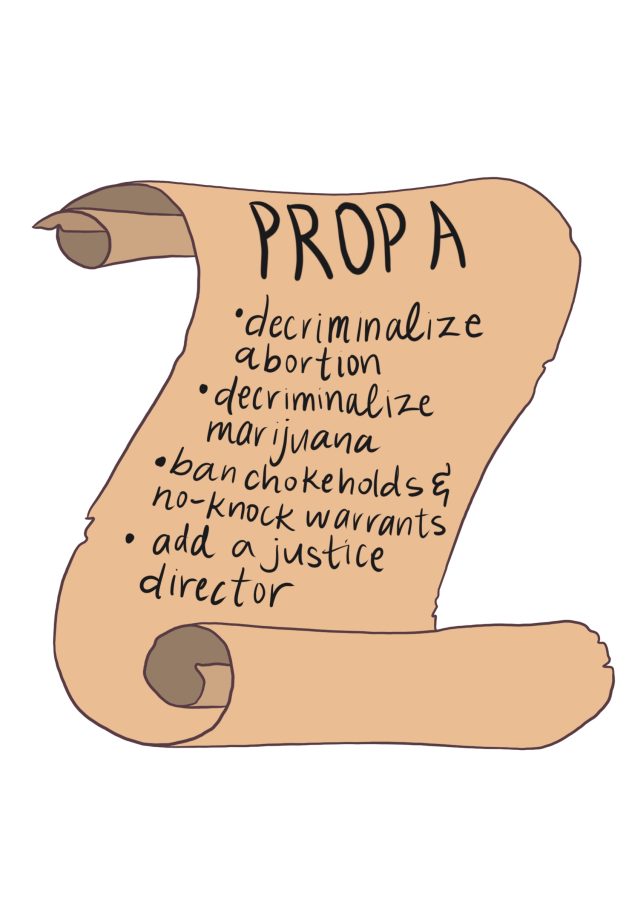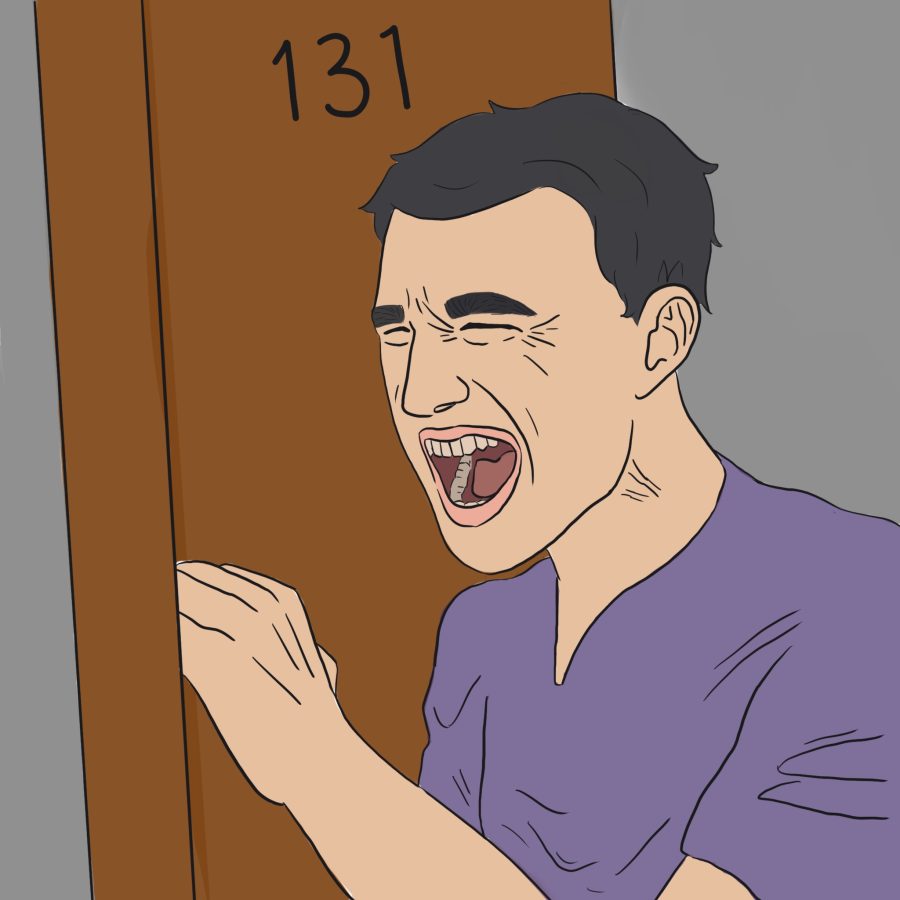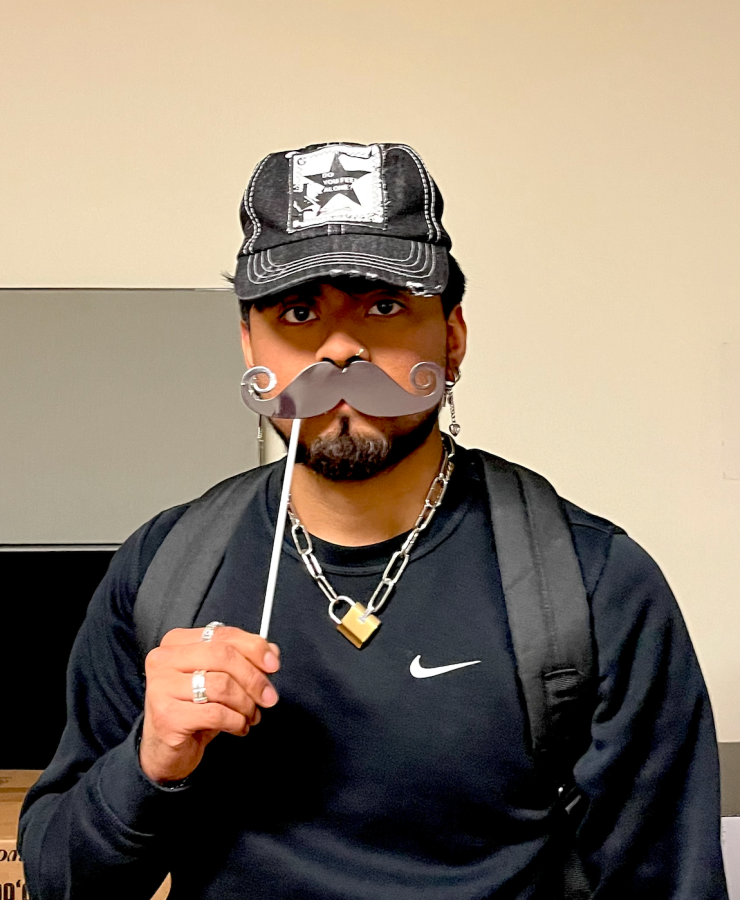Photo by Kate Nuelle
With plexiglass walls, a small team of masked medical personnel and a “please take a number” machine, Murchison lounge is a far cry from the midnight computer lab students know and love. Now, it’s the center of Trinity’s first round of COVID-19 surveillance testing.
The first round of mass testing revealed an exceptionally low positivity rate, and the most recent round has a nonexistent one. So far, there have been zero positive results from the first round of surveillance testing.
“It’s gone really efficiently, I’m pleased to say,” said Tess Coody-Anders, vice president for Strategic Communications and Marketing. “This is a pretty seminal moment. Mass testing was a big deal, now let’s see what’s happened since school started.”
About 100 participants were selected randomly by computer from the categories of on-campus students, off-campus commuter students, faculty and staff. The categories are selected proportionally to the size of populations relative to each other, meaning students account for more than 50% of those tested. Students are also representative of the different residence halls and buildings on campus.
The specifics of how many people to test, and in what ways, have been based on the recommendations of two local epidemiologists that have been in consultation with Trinity since the outbreak. “We rely on the professionals,” said Ivan Pendergast, Emergency Management Coordinator at Trinity.
Those randomly selected testees can choose online from a series of testing times so as not to interfere with classes or job obligations. Testees enter the one-way door, take a number, and after a short, socially-distanced wait, are given the polymerase chain reaction (PCR) “nasal swab” test. Once the test is complete, testees are then free to go about their day.
PCR tests are what Trinity is using right now, but that may change.
“Going forward, so that we can test perhaps more people and perhaps more often, we’re going to look at other options,” said Coody-Anders. “We’ve looked at and are trying to decide whether or not we’d use a rapid antigen test, or perhaps that in conversation with some other approaches.”
The level of resources Trinity has to respond to a COVID-19 outbreak on campus remains above what is currently being used.
“We’ve improved our processes at quarantine and isolation enough that we have a pretty good capacity,” Coody-Anders said. “We would want to be able to do enough testing frequently enough to take actions [and] reduce operations before the entire campus is implicated.”
“We don’t want to use low numbers as a false sense of security and relax,” said Pendergast. He attributes the success of the first round to “our [Trinity’s] messaging and students listening.”
Surveillance testing will continue this way for the foreseeable future, on a recurring 14-day cycle. It is not set in stone how Trinity would respond to an outbreak indicated by a second round of testing. Administration is keeping its options open.
“If it seemed that the positive results were clustered in a particular cohort, that might dictate an action,” Coody-Anders said. “I don’t think one round [of testing] will in and of itself trigger a closure, but it could trigger a path.”
Trinity has partnered with Florence Medical Group to facilitate testing. So far, Trinity administration has been satisfied with Florence.
“They’re a wonderful group who’ve been able to adjust with us every step of the way,” Pendergast said.
Murchison lounge’s transformation from computer lab to COVID-19 testing center in a single morning is representative of larger collaboration efforts across departments at Trinity. The Nerve Center has coordinated efforts with the Health and Wellness working group, the Facilities and Operations working group, the Teaching and Learning Task Force, Stakeholder Engagement working group, the Campus Life working group and the Operating Budget Task Force.
Finding the intersection between safety and university function has been difficult for Trinity’s top decision-makers. Canceling events and traditions like the first-year tower climb were hard calls to make.
“Let’s look at everything that needs to be done and look at the balance of experience and education,” said Pendergast. “That decision and ensuring safety and that we continue to operate.”
“Trinity faculty and staff really demonstrated just how nimble, innovative and creative they could be when faced with a shared problem,” said Coody-Anders. “I think it’s a shining example of what it means to be a Trinitonian.”
Coody-Anders and Pendergast both independently described their moods as “cautiously optimistic.”
“I think we can get to the end of the semester,” Coody-Anders said. “I think we can get to the end of the semester, and I think it would be an incredible story for Trinity and Trinity students to tell about the kind of culture of engagement and commitment to each other we have.”

